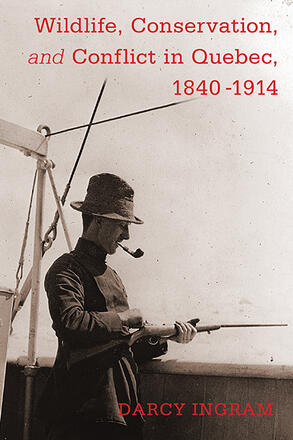
Wildlife, Conservation, and Conflict in Quebec is a unique/ groundbreaking analysis of the modern conservation movement’s Old World origins.
Description
Despite the popular assumption that wildlife conservation is a recent phenomenon, it emerged over a century and a half ago in an era more closely associated with wildlife depletion than preservation. In Wildlife, Conservation, and Conflict in Quebec, Darcy Ingram explores the combination of NGOs, fish and game clubs, and state-administered leases that formed the basis of a unique system of wildlife conservation in North America. Inspired by a long-standing belief in progress, improvement, and social order based on European as well as North American models, this system effectively privatized Quebec’s fish and game resources, often to the detriment of commercial and subsistence hunters and fishers.